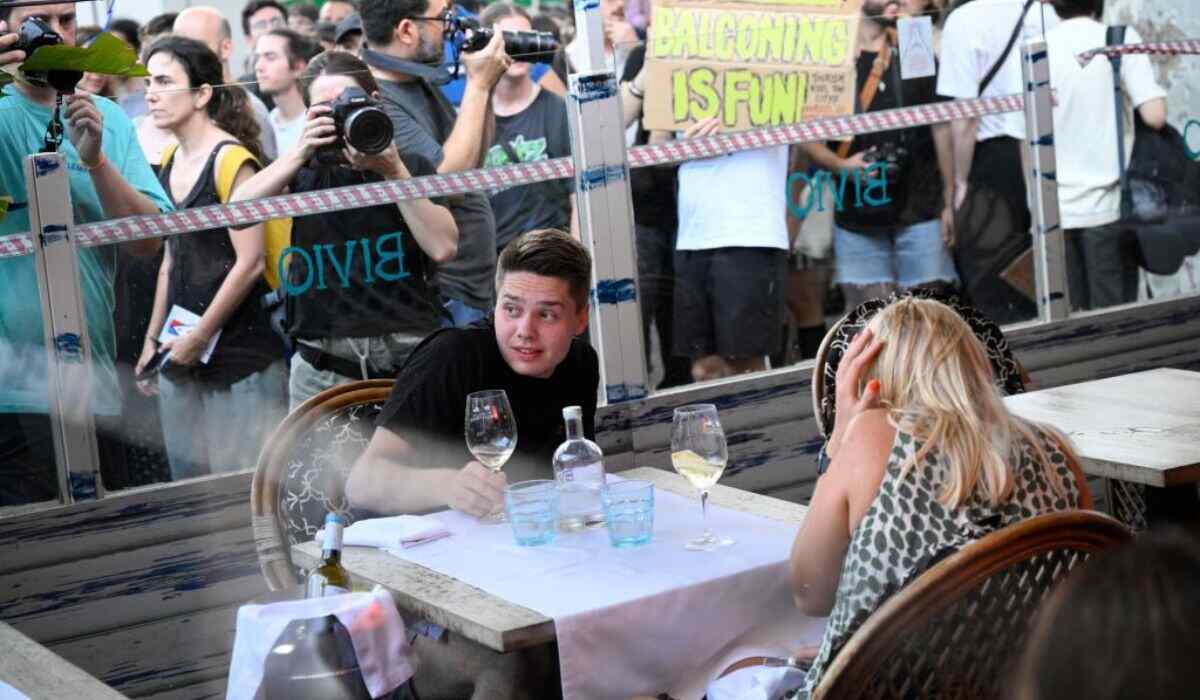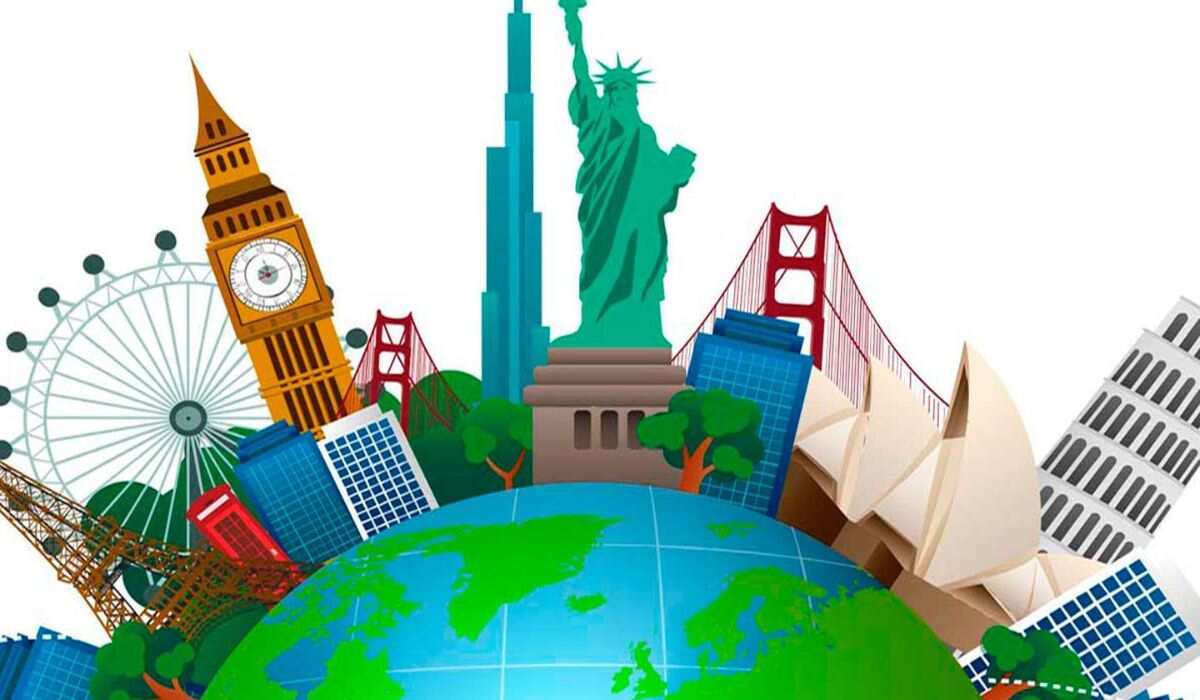Barcelona Spain Tourism Protests have illuminated the intricate balancing act faced by many popular destinations worldwide. What began as scattered rallies in 2017 congregating thousands under the “Tourists Go Home” mantra has evolved into an organized movement with sustained participation each peak season.
Residents mobilized through neighbourhood associations now coordinate demonstrations targeting hyper-localized issues. Whether voicing frustration with party boats blaring noise along the coast or public drunkenness disrupting playgrounds, protesters relay how uncontrolled tourism growth has degraded daily life in once peaceful residential enclaves.
Yet the issue goes beyond transient inconveniences—with limited affordable housing supply as short-term rentals exploded, many lifelong Barcelonans feel forcibly pushed out of their hometown. The rapidly shifting urban dynamics threaten the loss of cultural practices and the sense of place valued by citizens.
Anti-tourism protests in Barcelona
Anti-tourism protests in Barcelona erupted in 2017 and have continued each summer since, as frustration with the impacts of over tourism in the city reached a boiling point. What began as a rally of thousands under the banner of “Tourists Go Home” that September illustrated how deeply residents felt tourism was disrupting daily life.
Subsequent demonstrations saw neighbourhood associations lead the charge against specific issues like noisy party boats along the coast in Barceloneta. Protest signs denounced tourists as disrespectful and blamed them for cultural loss in familiar community spaces being taken over commercially.
While the rallies brought media attention, organizers vowed continued action until real policy changes were made to address core complaints. Pushback from business groups concerned about tourism dollars led to accusationsm protestors were damaging the economy and ignoring the industry’s important role as an employer.
Who is protesting in Barcelona?
There are a few main groups that have been involved in protests against over tourism in Barcelona:
- Residents – Ordinary citizens who live in Barcelona neighbourhoods that have been most heavily impacted by large tourist numbers, such as Ciutadella, Barceloneta, and BarriGòtic. They are protesting issues like noise, overcrowding, lack of affordable housing, and loss of local culture and character in their areas.
- Neighbourhood associations – Formal community groups representing individual districts have organized demonstrations against issues specific to their part of the city. For example, the Barceloneta neighbourhood association advocates against party boats.
- Grassroots organizations – New activist collectives formed in response to perceived problems with unchecked tourism growth. One prominent organization is the anti-tourist rental group Barcelona per Barcelonins.
- Unions – Labor unions have participated in protests over working conditions in the tourism industry. They advocate for better pay and restrictions on precarious temporary contracts.
- Left-wing political parties – Groups like Barcelona en Comú, a left-wing political coalition, support the anti-over tourism movement. They argue tourists should not take priority over inhabitants.
Demands of Barcelona’s anti-tourism protest
Here are some of the key demands of Barcelona’s anti-tourism protests:
- Regulate short-term rentals – Protests called for stronger restrictions on platforms like Airbnb to help address the loss of long-term housing for locals. They want licensing caps and fines for illegal rentals.
- Limit tourist numbers – Demonstrators argued tourism growth needs to slow down and be better managed to ease overcrowding. Some proposed yearly caps on total visitor arrivals.
- Disperse tourist flows – Neighbourhood associations wanted policy reforms to prevent the clustering of tourists in a few popular zones only, disrupting local lives.
- Curb drunken behaviour – Residents demanded enforceable bans on public intoxication and open-container drinking to improve safety and reduce noise in tourist hotspots like Barceloneta.
- Restrict party promotions – Protestors aimed to ban marketing campaigns explicitly tied to binge drinking and all-night clubbing that attracted unruly behaviour.
- Protect cultural spaces – Preserving elements of neighbourhood identity and mitigating the commercialization of public spaces was a priority demand.
- Invest in local services – Considering tourism’s economic importance, demonstrators pushed for more revenue to support community amenities strained by large crowds.
- Enhance enforcement – Stricter penalties for illegal rental listings and violations of conduct rules were called for to strengthen policy effectiveness.
- Give residents a voice – grassroots groups wanted ongoing forums for citizen input on tourism management to address community concerns.
How many tourists visit Barcelona?
Barcelona has seen tremendous growth in tourism over the past decade. In 2019, the city welcomed a staggering 31.1 million visitors, cementing its status as one of the most visited destinations in Europe. That figure marks a nearly three-fold increase from just 10.6 million annual tourists in 2000.
Even with the impacts of the COVID-19 pandemic, over 11 million travellers still managed to visit in 2020. Tourism providers estimate Barcelona generates around €12 billion per year from visitor spending, accounting for over 12% of the local economy. Certain regions within the city have experienced even greater influxes, like Ciutat Vella which includes top landmarks like Sagrada Familia.
In normal years, this central district may see 15 million footfalls per quarter from foreigners alone. Such unprecedented volumes have stretched infrastructure and services to their limits, contributing to local discontentment over how mass tourism is reshaping their hometown.
The Economic Benefits and Drawbacks of Mass Tourism in Barcelona
Barcelona welcomed over 31 million visitors in 2019 who together spent an estimated €12.2 billion in the local economy. Tourism has helped drive economic growth and job creation within the city for decades. With such high visitation numbers have also come unforeseen consequences.
Infrastructure and services are severely strained, as attractions like Las Ramblas and Park Güell see congestion all year long. Public transit in the city centre struggles to handle the influx of tourists competing with residents for valuable resources.
The rapid growth of short-term rentals on platforms like Airbnb has further impacted locals by driving rent prices up by over 30% since 2016. With housing no longer affordable, many feel forced to relocate further from the city core. The changing urban landscape and daily disruptions have led to resentment building among the local population.
Rising Discontentment and the Start of Demonstrations
Frustration over the impacts of mass tourism had been simmering under the surface for years before reaching a boiling point in 2017. In September of that year, thousands rallied through the city centre under the banner of “Tourists Go Home” to voice their grievances directly. Complaints at the protest targeted noise and disruption from party boats along the shoreline in Barceloneta at all hours.
A loss of tranquility and community feel due to areas being inundated with foreign visitors was also lamented. The following summer, demonstrations grew even larger as neighbourhood associations mobilized against specific problem areas.
In Ciutadella Park, for example, locals called for limits on drunkenness and public urination that deterred families from enjoying public spaces. The demonstrations illustrated how the quality of life issues had become a mobilizing factor for residents ready to take a stand against uncontrolled tourism expansion.
Authorities Respond with New Regulations
In response to rising civic pressure, city officials announced plans to modify tourism policy within Barcelona. A pioneering law passed in 2015 was the first stab at tackling short-term rentals of entire homes, with a registry process meant to return units to long-term housing.
Rent increases continued and enforcement proved difficult. Recognizing the failure of initial regulation, the city council voted to tighten rules in 2019. New operators would be banned while caps were established in popular districts. Simultaneously, authorities have leaned on promoting “sustainable tourism” as a buzzword.
Concrete strategies for managing visitor numbers or distributing them away from congested areas are lacking. On the issue of drunk tourism promotion specifically, leadership claims to have made meaningful changes. Open container restrictions and bans on overly permissive marketing campaigns aim to shift the city’s image away from non-stop partying.
Navigating the Future of Tourism in Barcelona
Barcelona faces the continuous challenge of leveraging tourism’s financial benefits while also protecting liveability. Continued unchecked increases pose risks to cultural preservation and quality of life.
Authorities now recognize the need for reforms but implementation and ambition require still more progress. Moving forward, stakeholders must collaborate on innovative solutions, from technology-based visitor management to a diversity of attractions.
With proactive leadership, cities like Barcelona can balance thriving economies with responsible, community-centred tourism appeasing both industries and residents alike. But difficult discussions are still ahead, and compromise will be necessary from all parties impacted by the profound changes of over tourism.
Other countries have residents discouraged tourism
Here are a few other cities/countries where residents have discouraged tourism due to overcrowding issues:
- Venice, Italy – Known as one of the earliest examples of over tourism, Venice sees around 30 million visitors annually for its small size. Locals have staged protests calling for caps.
- Amsterdam, Netherlands – Issues like housing shortages have led to demonstrations against the impacts of 20+ million tourists. “Amsterdam” T-shirts voice frustration.
- San Francisco, USA – Soaring rents and homelessness prompted some “Don’t Move to SF” campaigns as the city sees 25 million visitors yearly.
- Iceland – Over 4 million travelled to Iceland in 2019, overwhelming infrastructure in a small nation of just 350,000 residents. Environmental worries grew.
- Greece – Islands like Santorini and Mykonos face severe overcrowding in summer, to the dismay of full-time inhabitants.
- Cinque Terre, Italy – The five colourful villages struggle with over 4 million tourists squeezing narrow alleys and disrupting pastoral culture.
- Cádiz, Spain – Known for its blue flag beaches, this Andalusian city’s overrun coastline has spawned anti-tourism protests.
- Hawaii, USA – Issues like biodiversity depletion have native Hawaiians advocating for sustainability in their home’s recreational tourism.
- Machu Picchu, Peru – Limiting visitor numbers has been recommended to preserve the Inca citadel from degradation.
Frequently Asked Question
What issues are prompting demonstrations?
Issues include overcrowding, lack of affordable housing, noise from activities like party boats, public intoxication, and loss of local culture in some neighbourhoods.
How many have participated?
The largest protests in 2017 brought thousands, while subsequent annual neighbourhood group rallies commonly see hundreds.
What policies have officials introduced?
Key policies regulate short-term rentals, limit new hotels, restrict drunk tourism promotion, and manage cruise ships.
Do protesters want an end to tourism?
No, most recognize tourism’s economic importance and favour responsible development with quality of life prioritized.
How do authorities plan to resolve tensions?
Long-term solutions require cooperation across sectors to ensure affordable housing, infrastructure, visitor controls, and ongoing community input.
Conclusion
Barcelona serves as a case study in both the rewards and pitfalls brought by mass tourism to internationally renowned destinations. While visitors’ spending power strengthens economies, unfettered growth often comes at the cost of affordability and character of place for citizens.
Active involvement across private and public sectors will be paramount to establishing fair, sustainable policies guiding travel development with local priorities in mind. With care and cooperation, communities need not choose between their heritage or financial security – but time will tell if Barcelona can successfully remedy current issues and safeguard a live able future.
















